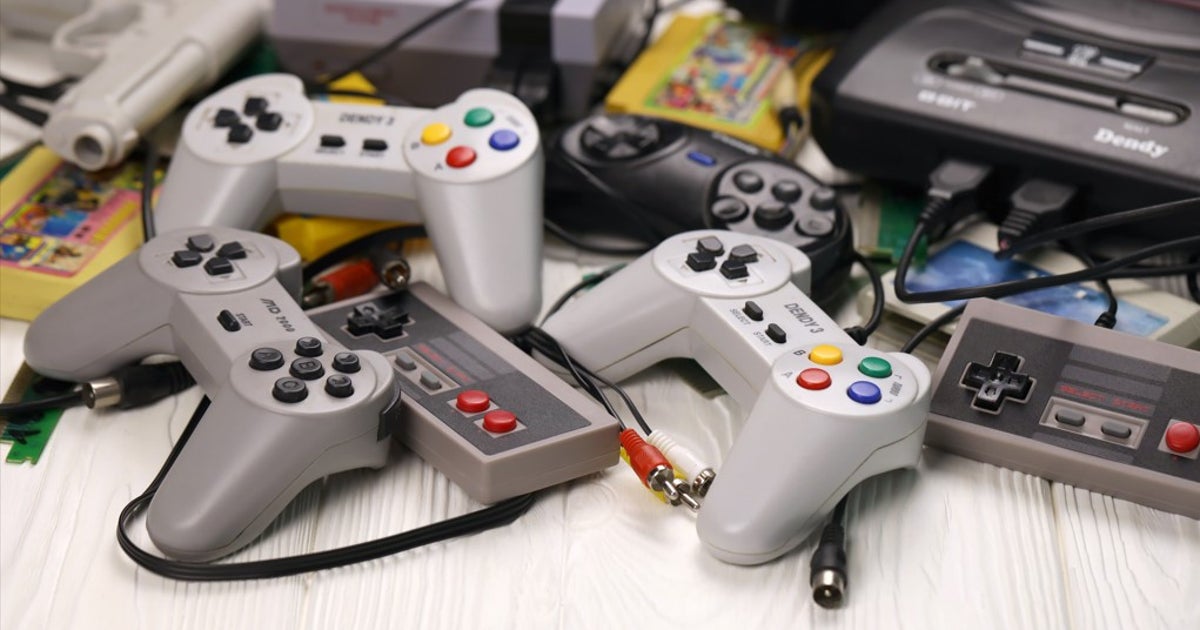Thick Thighs Save Lives
NeoGAF's Physical Games Advocate Extraordinaire
Console gaming is dying.
If you've been in this business for more than 15 years, you've probably heard a sentence like that before. In the early 2000s, it was PC gaming that was dying. Consoles were booming, piracy was putting off publishers, and the same old games were topping the charts. Forget PCs, it was all about PlayStation.
Then Steam came along, and the indie scene, and, well, let's just say nobody is predicting the end of PCs anymore.
Then, about eight years ago, handheld gaming was dying. PS Vita had flopped, the Nintendo 3DS had sold half of what its predecessor managed, and smartphone games were the dominant form of gaming globally. Forget handhelds, it was all about iPhone.
Then Switch came along and created a popular product that sat somewhere between consoles and mobile and, well, let's just say nobody is predicting the end of handhelds anymore.
Things are a little different this time. There's compelling data to show that the console market is slowing down, and both Xbox and PlayStation spent much of last week talking about their multiplatform strategies.
In fact, it's been a bad week for fans of that box under the TV.
On Wednesday last week, Sony revealed that it will miss its target of shipping 25 million PS5 consoles in the financial year by four million (at least). That means that the PS5, which is now in full supply, is trending behind the PS4.
In the financial Q&As that followed, COO and CFO Hiroki Totoki talked about how releasing more PS5 games on PC was part of an 'aggressive' plan to grow margins.
Then the very next day, Xbox's much anticipated business update confirmed that some of its games would be coming to PS5. The company still went to great lengths to remind everyone that it's not about to walk away from hardware, and its key titles remain 'exclusive' to Xbox and PC. But its strategy has long been about going beyond the box, and last week was a further move in doing just that.
The numbers speak for themselves. If we look at install base figures, we can see a console business that really hasn't grown for 20 years. Just under 180 million PS2 and Xbox consoles were sold during that generation. That dropped slightly to just over 170 million during the PS3 and 360 era, and then we're back up to around 180 million for PS4 and Xbox One (the mid-cycle upgrades helped).
There has been significant growth in revenue, driven by subscriptions, DLC, microtransactions and the general switch to digital, but the PlayStation/Xbox market hasn't expanded its userbase. And with rapidly rising development costs putting pressure on profitability, these companies need to either make cheaper games, or find more customers (or, ideally, both).
The eagle-eyed amongst you will have noticed that I didn't mention Nintendo in those figures. Nintendo complicates the narrative. For starters, its consoles are now out of sync with its competitors (should Switch's install base be added to the PS4 generation or PS5?). But also, should Switch be classed as a console or a handheld or both? And if it's both, should we therefore be including handheld sales from previous generations? If we do that, frankly, we've seen a startling decline in users since the peak of the Wii, PS3, 360, DS and PSP era.
Nintendo is often treated as a different market entirely. As a console built around first-party titles, and primarily targeting families, it is playing in a different space to PlayStation and Xbox. Even the regulators analysing the impact of Microsoft buying Activision Blizzard considered Nintendo different to Xbox and PlayStation.
But isn't that difference the solution to all this? Nobody should expect the market to continue growing steadily year-after-year without the introduction of something different. It's through innovation that markets grow.
The idea that Nintendo isn't a competitor to PlayStation or Xbox is a very narrow way of looking at the business. In this engagement-based economy, which is all around keeping the attention of consumers, everything is a rival. Movies, TV, books… even sleep. So, of course a box that plays games is a competitor to other boxes that play games.
One of the reasons the Xbox/PlayStation market hasn't grown is that there are too many gamers 'ageing out' of consoles, and there's not enough young people coming in at the other end of the funnel. I would argue part of the success of Nintendo Switch is that it caters for both much younger players and much older ones, acting as a convenient product for time-poor adults and as an entry-point for younger children. The universal appeal of its brands also makes it a popular way for parents to play games with their children.
Nintendo has attracted these players through its games, yes, but also with hardware 'novelty'. The ability to switch from portable to handheld, the detachable controllers, the motion controls, touchscreen, tabletop mode… some of these elements have been more successful than others, but it all extends Nintendo's appeal to people who might not consider an Xbox or a PlayStation. Nintendo then pairs these innovations with software. Beyond the obvious titles, there have been projects like Arms, Nintendo Labo, Ring Fit Adventure… they weren't all hits, but they're examples of games you couldn't easily replicate on a PC or mobile phone.
Historically, it was common that each console would bring something new outside of better visuals. In the formative year of games, we saw cartridges become CDs, then DVDs, then Blu-Rays. We've had the introduction of Xbox Live. We've had the D-Pad, the analogue stick, touch screens, motion controls, camera controls… we've even had a handle. Yet these innovations do come with risk for those that over-commit. The whole 3DS/Wii U era, where Nintendo banked on a 3D screen and a tablet controller to attract users, is a lesson in the dangers of this strategy. 3DS found an audience eventually, but by largely abandoning its initial 3D selling point.
PlayStation and Xbox have pushed new concepts down the years, too. For Sony, we've had EyeToy, SingStar, PlayStation Move and, most recently, VR. The company never went as far as Nintendo as to build a platform around them, but they had the same goal of trying to widen the PlayStation audience. And they often succeeded, at least for a period.
A lot of Microsoft's innovations have come through services, such as Xbox Live and Game Pass. But there's been hardware, too. Kinect did a strong job of expanding the audience of Xbox 360, and this was followed by the decision to bundle an improved Kinect with the Xbox One. It was a move that ultimately failed as there was no compelling use case for it. There was no Wii Sports-style game to drive adoption. As a result, Kinect was soon de-bundled so that Microsoft could lower the Xbox One's price.
There were efforts beyond Kinect, things like HoloLens and SmartGlass, which never manifested themselves in full. Yet they still highlighted Microsoft's eagerness to investigate things that only a living room device could deliver.
These initiatives have a habit of going wrong more than they work out, yet it's these innovations that separate console from PC and mobile. With smartphones becoming more technically capable and PCs becoming increasingly accessible, consoles need to react and show what's unique about them, just as the PC space had to back in the early 2000s, and handheld gaming had to in 2017.
This may be a harsh analysis, but I look at the PS5 and Xbox Series generation, and I see two platforms that haven't offered much over what came before. The PS5 DualSense controller is a nice piece of kit, and the dual-console approach of Xbox Series S and X is unique. Yet outside of that, we're mostly talking about nicer visuals and faster loading times. Even the most popular games are largely the same this generation as they were on the previous machines.
Both Microsoft and Sony are looking beyond the borders of their boxes to find new users and to expand into different markets, which will allow them to keep investing in new, expensive God of War and Halo-sized projects. It's a perfectly reasonable strategy that should deliver results in the short-term. And for most game types, the ability to play them across different devices has clear benefits to players.
Yet simultaneously, the multiplatform push points to a console market running short on ideas. Where the main differences between a gaming PC and a PlayStation are the screen you're playing on and the chair you're sitting in (and even then, not necessarily).
We've been here before, of course. And as this homogenised view of the future of games comes to fruition, I like to think there are still creators who are eager to innovate and make the good old games console that bit more interesting once again.






